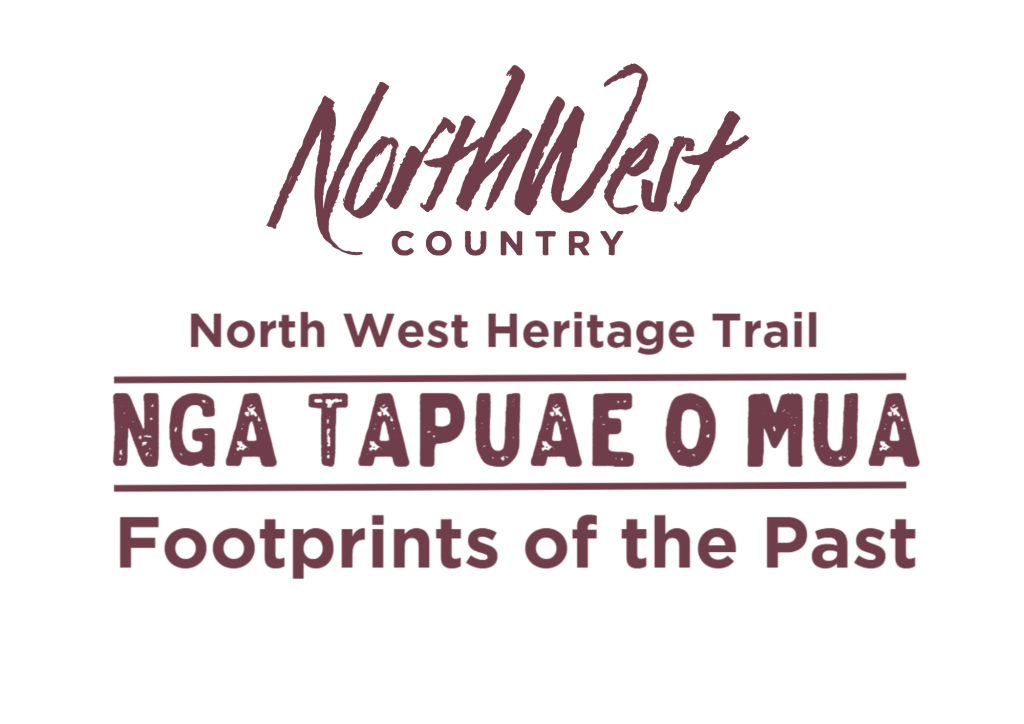
KO NGĀ IKIIKITANGA
Tinitini maha ngā momo ikiikitanga ināinei, engari, i ngā wā o mua me hīkoi, me hoe rānei. I homaingia e ngā Pākehā ngā hoiho, ngā kaipuke, ngā wēkana, ngā rerewē (i te tau 1875), ā tāria te wā, ngā motokā. Mīharo kē ēnei ikiikitanga, engari i pau aua ikiikitanga i te whenua me ngā rawa taiao. I whakamārū te whakahāwinitanga o ngā rawa taiao o Papatūānuku. Nā wai i matakite i te whatungarongarotanga o ngā tini kauri? Ko te utu nei o te kauneke. Ko ngā taniwha hou ēnei ikiikitanga?
TRANSPORT
There are many sorts of transportation these days but in earlier times you either walked or paddled. With the arrival of Europeans came horses, wagons, ships, the railway (in 1875) and, eventually, cars. These were incredible things, but they ate up the land and natural resources. They made it easier to exploit the wonders of Papatūānuku (the earth mother). Who could have predicted that the abundance of kauri would disappear? This was the price of progress. Were these modes of transport to become the new taniwha?
Ikiikitanga – Transport
Māori used waka (canoes) just as we use cars today. The waterways were like roads, running along the coast and the many rivers of the Kaipara harbour. The waka were carved from locally sourced trees and the Te Awaroa (Helensville) area had an abundant supply of tōtara and kauri suitable for local use. Waka taua, the largest waka, were used by warriors for battle and were considered sacred. Waka tīwai, river canoes, were for fun and racing. But it was Waka tētē, fishing canoes, which were used to carry goods and people along the rivers and coast.
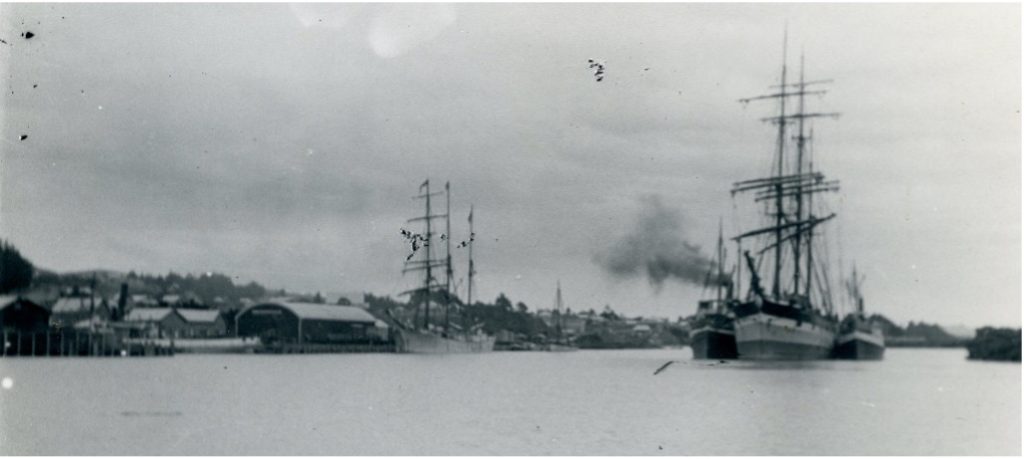
Te Awaroa Waterfront – Steamers taking a sailing ship to sea – courtesy of Helensville Museum
Transport by land was very difficult in the early days of European settlement. Sea transport provided the easiest means of moving goods and people. Whaleboats and punts were in early use by the settlers, but sailing ships were the real traders, followed by the era of steam.
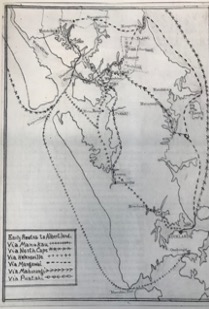
Early Portage Routes -From “Riverhead, The Kaipara Gateway” by the Riverhead Jubilee Association Incorporated
Connecting the Waitematā and Kaipara Harbours was the old canoe portage which ran from a spot known as Te Tōangawaka in Pitoitoi (Riverhead) overland to the Kumeu River. The route then ran down the Kumeu and Kaipara Rivers to the Kaipara harbour. When McLeod’s mill and wharf were built in the 1860’s, this became the Government Road, and it was over this track people would walk heading north – a journey of fourteen miles usually taking two days. They carried what they could. Another important pathway avoided the swampy lowlands and followed the Onewherowhero Ridge through what is now the Riverhead Forest.
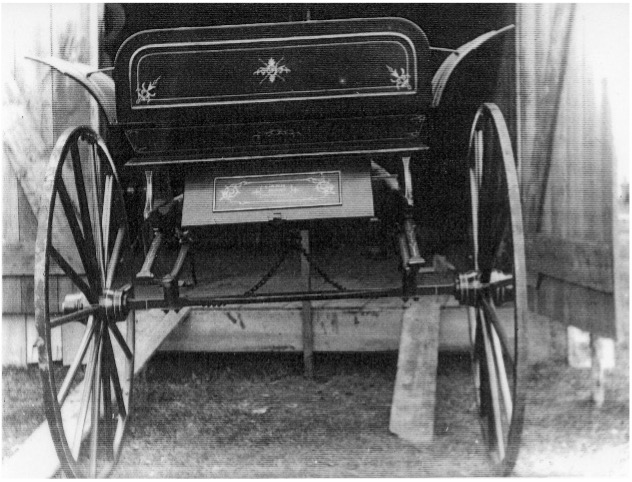
Coach built by G Spinley Coachbuilders Helensville – courtesy of Helensville Museum
By the early 1870s John McLeod had two bullock teams with drays carrying goods and produce. This route was also serviced by Cobb and Co. coaches, followed by Phillip and Isaac Junior McLeod’s horse coaches.
The importance of the coming of the railway to the settlers and businessmen of the district cannot be overemphasised. It made access for people, goods, and stock much easier than the former long, and sometimes dangerous, harbour access. Roads were difficult to maintain and were in such a poor state that it was too much trouble to use them on a frequent basis.
Work on the railway started in 1871, and by 1875 the railway between Pitoitoi (Riverhead) and Te Awaroa, Helensville South, began. It enabled a greater flow of goods and passengers to the wharves. When the Waitakere tunnel was opened in 1881 the trains came directly from Tāmaki Makaurau (Auckland) through to the north station, cutting out the ferry trip to Pitoitoi. Also in 1881, the Orakei Parliament petitioned the Government to complete their promise made by Mr Sheehan about the houses to be given at Tāmaki Makaurau and Te Awaroa in lieu of land taken up by the Kaipara railway.
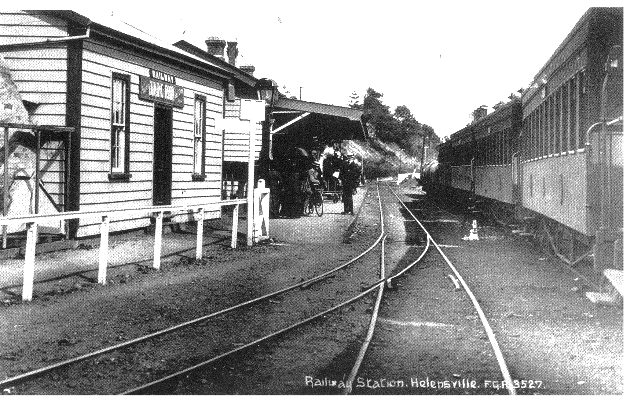
 Helensville South Station – courtesy of Helensville Museum
Helensville South Station – courtesy of Helensville Museum
The problem of the Kaipara River separating Parakai and Te Awaroa was overcome by a swing bridge in 1882, later replaced by a concrete version. Speculation of a canal joining the Waitematā and Kaipara arose many times over the years, but the advent of the car dictated what became known as the main road north and later State Highway 16.
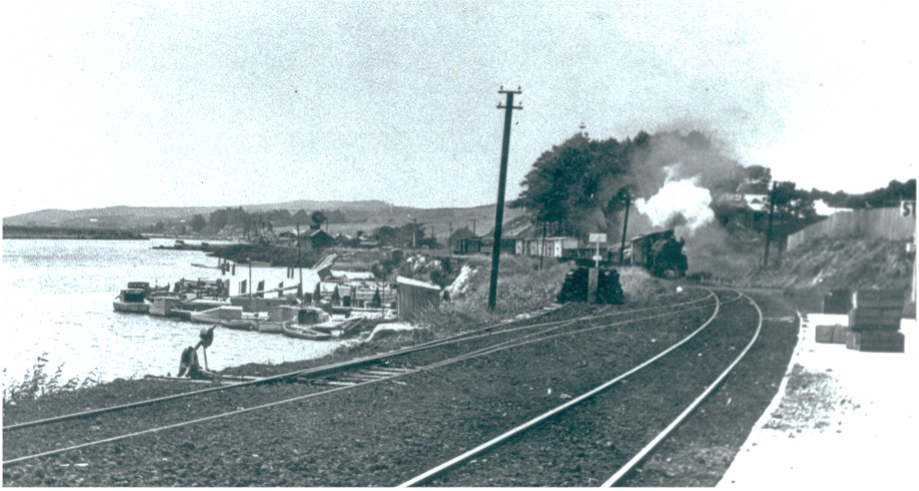
 Train coming into Helensville South station – shows Fisherman’s Wharf in the background – courtesy of Helensville Museum.
Train coming into Helensville South station – shows Fisherman’s Wharf in the background – courtesy of Helensville Museum.
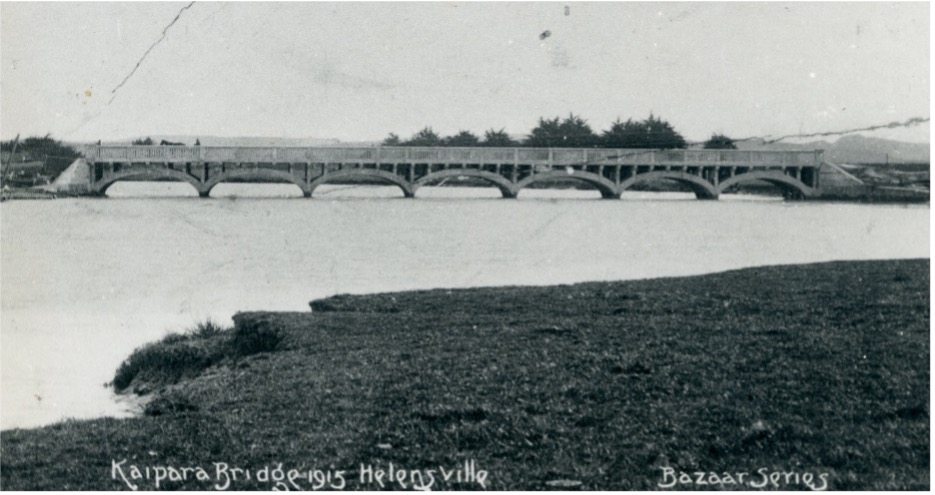
More Reading from Papers Past:
Peculiar Accident at Helensville 8-9-1881
Race with a cow 23-5-1908 (see halfway down article)
Watch It! 12-2-1910 (see halfway down article)
People & Their Stories…
Douglas Brothers
In, about, 1888 four brothers, Robert, William, Alec and John Douglas, came to Te Awaroa (Helensville) with their mother They built a home on the corner of Rautawhiri and Garfield Roads. The brothers began a Te Awaroa to Dargaville passenger service in opposition to the Northern River Steamboat Company. Osprey and her sister ship Eagle had come from Scotland to Aotearoa (New Zealand). They didn’t come under their own power, but they came in pieces which were assembled in the colony. The two paddle steamers had been used by Mr Quick to run against the Devonport Ferry Company’s vessels, but when the latter company bought out Mr Quick’s firm, Osprey was put up for hire. When the Douglas brothers brought Osprey to the Kaipara they ran her for about ten years, usually with John Douglas as captain and his three engineer brothers as crew members.

The Osprey – courtesy of Auckland Libraries Heritage Collections 4-3161
The Osprey was far from a suitable vessel for the Kaipara. She was never intended for carrying cargo. While she was in the Kaipara, she had an accident which could easily have resulted in fatalities. The cargo she carried was stored in a shed on the top deck. On this occasion she had an unusually large quantity. It was no problem in the river, but when she got into rougher waters towards the harbour entrance, she began to fill through the portholes under the sponsons. They just managed to reach the shore between Mosquito Bay and Bucklands Wharf at South Head, where she sank with her bow out of the water, lying at a steep angle with deep water over the stern. The passengers crowded forward and were able to get ashore in a dinghy. She had a good lifeboat lashed upside down on one of the paddle boxes. It went down with her. The crew seemed too distracted to launch it. She was refloated with the cutter “Warkworth” on one side and a scow on the other. She was then brought to Te Awaroa, where she was cleaned out and found to have very little damage. She was taken back to Tāmaki Makaurau (Auckland) and finished her life in her original trade.
